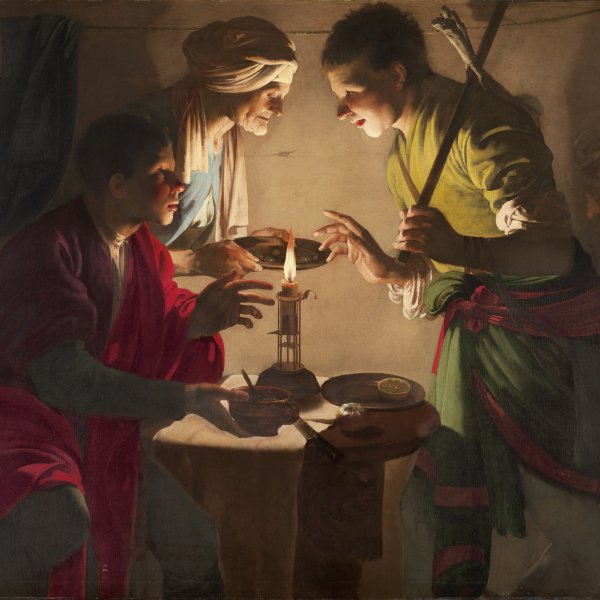Hendrick ter Brugghen
Along with Gerrit van Honthorst, Ter Brugghen was one of the most important members of the Utrecht Caravaggisti. It is not known for sure where the artist was born, although surviving records in The Hague on his father, the lawyer Jan Egbertsz. ter Brugghen, suggest it may have been in that city. Ter Brugghen studied in Utrecht with Abraham Bloemaert and travelled to Italy to further his training in the summer of 1607 at the earliest. He spent about seven years in Rome, where tradition has it that he met Rubens and came into contact with the circles of Caravaggisti such as Carlo Saraceni and Orazio Gentileschi and learned the chiaroscuro technique. As he himself recounted, he “practiced” his art there “for a few years”, but it still not known where he lived or what works he produced. He is believed to have worked on a commission for the altar of a church in Naples. In the summer of 1614 he is documented as being in Milan with Thyman van Galen, with whom he returned from Italy to Utrecht, where he registered with the painters’ guild that year. His first known work, the Supper at Emmaus in the Toledo Museum of Art, Ohio, dates from that year. His output is notable for religious paintings and genre scenes, especially his figures of flute players and young boys. His palette is bright and colourful, and he exquisitely handles gradations of light and colour, and takes delight in detail. The return of Gerard van Honthorst and Dirk van Baburen to Utrecht from Rome between 1620 and 1621 had a decisive influence on his stylistic development. The three artists established a fruitful dialogue based around Caravaggio which enabled them to learn from each other. Ter Brugghen’s finest works include the Calling of Saint Matthew, painted in 1621, in the Central Museum in Utrecht; the Saint Sebastian of 1625 in the Allen Memorial Art Museum at Oberlin College, Ohio; and the Crucifixion executed around 1625 and now in the Metropolitan Museum of Art, New York. His paintings are considered an important link between Baroque Rome and the Dutch school. Hendrick ter Brugghen died in Utrecht in 1629.





